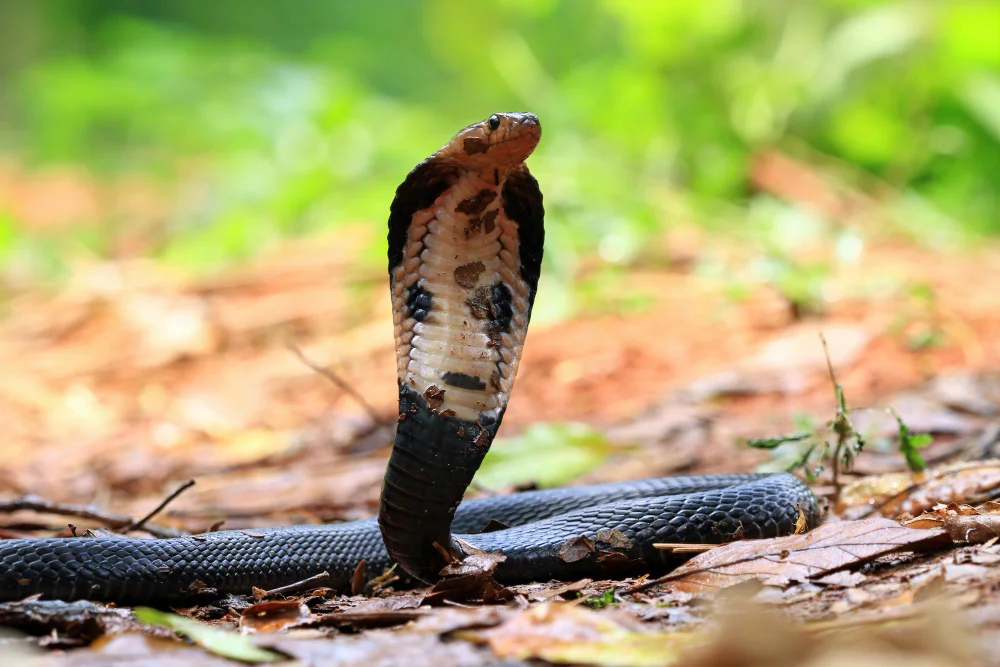Cobras are a group of venomous snakes known for their distinctive hooded appearance, characterized by wide, flattened necks that they can expand when threatened.
They are typically found in tropical and subtropical regions, often preferring dry, open habitats. They are classified into two main genera: True Cobras (Naja genus) and Spitting Cobras (Hemachatus genus).
Physical Characteristics:
Cobras typically have long, cylindrical bodies and broad, spread-out necks. Their heads are triangular-shaped, and they often have distinctive hood markings resembling those of a tiger. Their coloration varies by species, with some being solid-colored while others are patterned.

Behavior and Feeding:
Cobras are primarily diurnal carnivores, meaning they are active during the day and feed on a variety of prey, including rodents, birds, lizards, and other snakes. They often use stealth to capture prey and may raise their heads when threatened to intimidate predators. Cobras possess venomous fangs, which they use to inject venom into their prey before consuming them.
Venom and Defense:
Cobras are known for their potent venom, which they use for both hunting and defense. While they generally avoid human contact, they can become aggressive and strike if threatened. Their venom serves as an effective weapon for subduing prey and deterring predators.
Reproduction and Offspring:
Cobras are typically egg-laying snakes, with females laying their eggs in a suitable location where they are left to hatch on their own. Some species exhibit maternal care, guarding their eggs until they hatch or incubating them by coiling around them.
Cultural and Mythological Significance:
Cobras hold cultural and mythological significance in many societies, often symbolizing both fear and reverence. Some cultures associate them with deities or view them as symbols of protection, while others regard them with fear and superstition.
Conservation Status and Threats:
Cobras face various threats, including habitat loss, hunting, and human-wildlife conflicts. While some species are considered endangered or vulnerable, others have more robust populations. Conservation efforts aim to protect cobra habitats and populations through habitat preservation and public education.
Conclusion:
Cobras are fascinating and often misunderstood snakes with a rich cultural history and ecological importance. Understanding their biology, behavior, and conservation needs is crucial for ensuring their survival in the wild.


